Fluffy cacti: types and rules of care

Cacti have long won the love of many flower growers. The popularity of plants is due to the fact that they are unpretentious in care and can exist normally even in the house of a forgetful owner. Special attention should be paid to such a subspecies of succulents as fluffy cacti.
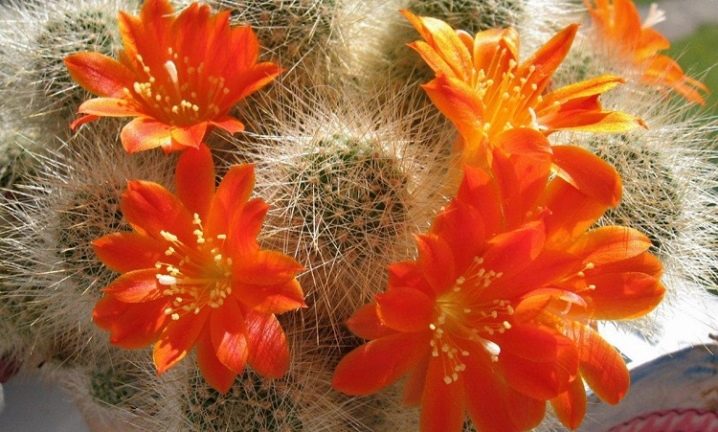
general description
It is worth starting a conversation about the fluffy cactus "Espostoa" with the fact that it came to the Slavic countries from Peru. This name was given to him in honor of the famous botanist Esposto Nicholas. It was he who was one of the first to study this succulent.
The hairy cactus has needles that feel a bit like cotton wool. Thanks to this "white cloud", it is reliably protected from various pests. The plant has a good immune system and does not require any special care. Its unusual shaggy appearance and woolly surface make it stand out from other cactus species.
The appearance features of different varieties of succulents with fluff differ. Some plants have curly needles, others are elongated.
Despite the fact that the furry layer seems soft to the touch, it actually prickles.
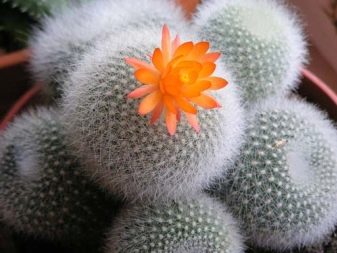
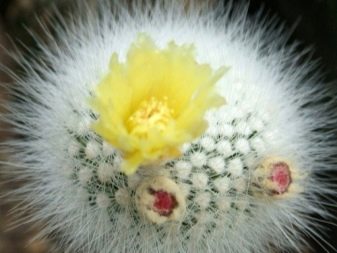
Views
There are many subspecies of furry succulents. Among them there are varieties that can only be found in the wild. There are also varieties that can be grown at home. The height of indoor species does not exceed 80 centimeters. If you compare them with the "congeners" from the desert, it becomes clear that the difference in height is significant.
The shades of the stems also differ. They can be either deep green or almost brown. Some of them come with a small downy, others with fine hair. The biggest rarity is a cactus with a flower. This is a rather rare and very beautiful phenomenon.
Several subspecies are considered the most popular. Let's consider them in more detail.

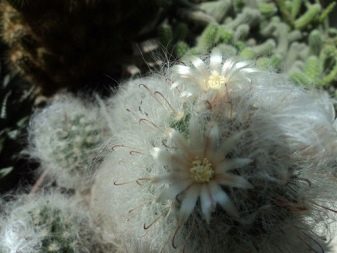
Lanata
One of the most common home-grown fluffy cacti is the woolly succulent Lanata. Its distinctive feature is the stem in the form of a pillar, which has up to 25 ribs. Plant height can range from one to five meters.
Shoots appear only in mature plants. The stem is green with yellow needles and reddish tips, which can be up to five centimeters long. All this beauty is visible through the cloudy shroud.

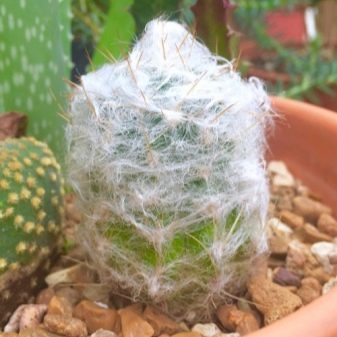
Nana
These succulents in natural conditions grow up to five meters in height. At home, plants usually stop growing, reaching about 65 centimeters. The stem is densely covered with silvery needles. The original appearance of the plant with silver-colored hairs immediately attracts attention.
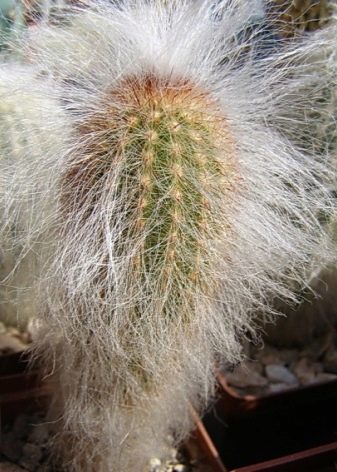

Black columnar
This cactus variety is considered exotic. It got its name from the columnar stem, which has a very dark, almost black color. The plant is completely enveloped in a white “cap” that protects it from pests. The height of this succulent in nature reaches two meters. It has up to 24 ribs, which are densely covered with fine hairs. In addition, if you look closely, you can see almost brown spines peeking through the fluffy layer.
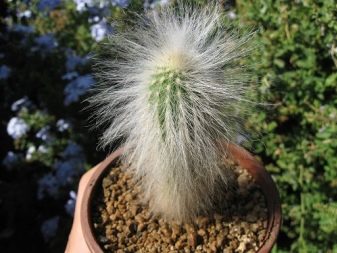
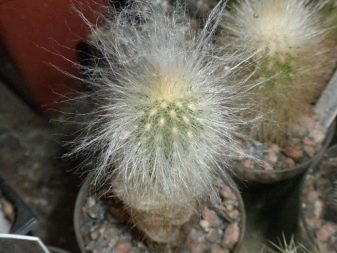
Ritter
The cactus, called Ritter, is also a columnar plant. Its height reaches four meters. The plant has many branches with a very dark green hue. Each of them has 17-18 small ribs, which are separated by grooves.Those, in turn, are densely covered with white hairs, the length of which reaches 2.5 centimeters. In addition, there are 20 thorns on each rib, and in the very center there is one black thorn up to two centimeters long.
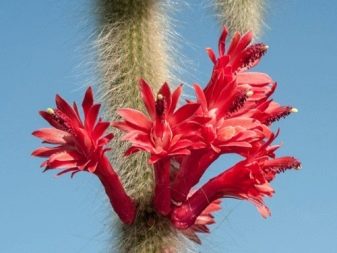
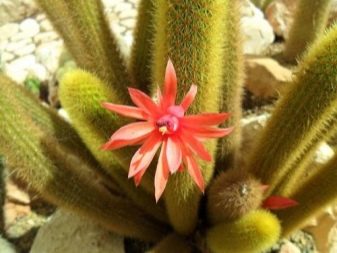
Flowering features
Such cacti bloom extremely rarely. This miracle happens only when the growing conditions are as close as possible to the natural habitat of the culture. In their homeland, only adult plants bloom, but very young ones do not even release buds. The same goes for those cacti that can be grown at home. You should not expect that they will immediately please with flowering.
The flowers of this succulent are lonely, usually light pink and sometimes white. Their shape is a bit like a funnel with a diameter of up to 6 centimeters and the same height. After the end of flowering, small and juicy fruits appear in place of the buds. They are also edible. Inside each fruit are black seeds.
It is worth noting another feature of this type of cacti - they bloom only at night. Therefore, to see such exotic beauty, you must wait until sunset.
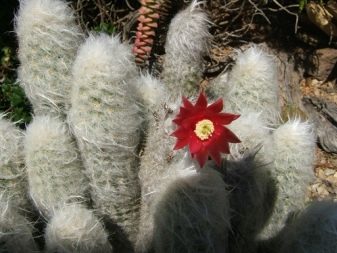
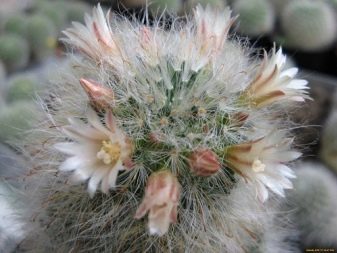
Care rules
To settle such a plant at home and successfully grow it in unusual conditions, you should first familiarize yourself with some of the nuances. First of all, success depends on the choice of the cactus. When buying it, you need to carefully inspect it to make sure that the plant does not have any diseases and that it is free of pests. In addition, the plant should not be loose or soft. Hair and needles should be thick. Sparse needles are the first sign that a fluffy cactus is sick.
Having brought such a plant to your home, it is imperative to create conditions for the plant in which it will be more comfortable. It is also important to learn how to properly care for him.
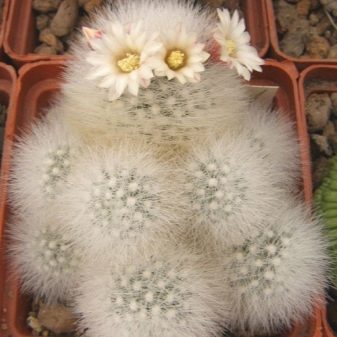
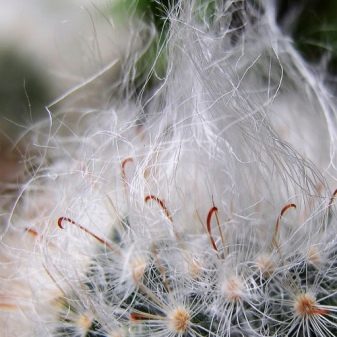
Lighting
A succulent can develop well only if it receives a sufficient amount of light. Therefore, it is better to place the culture on the windowsill, which is located on the south side. Do not be afraid that the sun will harm the plant. In nature, cacti grow in the desert, which means that the culture cannot dry out in our climate. When the day decreases, it is necessary to extend it artificially.
For this it is recommended to use lamps with soft light.
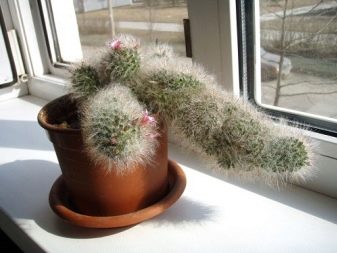
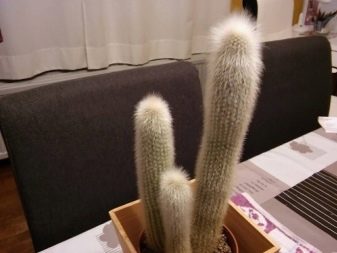
Temperature regime
Succulents are thermophilic plants. Therefore, they develop best at high temperatures. A home cactus will feel great in the summer. At this time, the temperature can range from 16 to 30 degrees. But in winter, during the dormant period, the cactus should be placed in a cooler place, where the temperature will vary from 7 to 11 degrees above zero.
In addition, sharp temperature changes should be avoided, otherwise the plant will die.
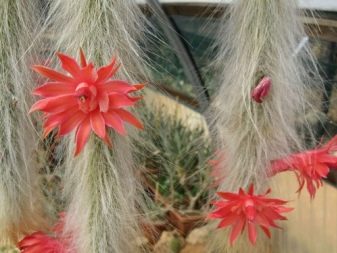
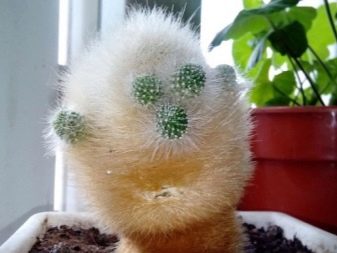
Proper watering
Since the homeland of cacti is hot countries, it is often not worth watering this plant. For example, in the most active period of succulent growth, this should be done once a week, and only when the soil is completely dry. In winter, it is enough to water the plant once a month. The fact is that cacti react very badly to an excess of water and may even start to rot. This, in turn, can lead the plant to death. Spraying fluffy succulents is not recommended, as a limescale can then appear.
It is also important to remember that the water used for irrigation must be soft. To do this, you need to defend tap water.
You can also use clarified drinking liquid.
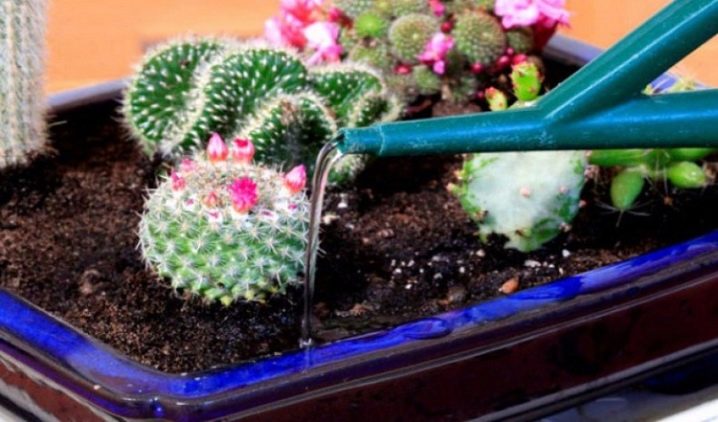
Top dressing
In nature, this fluffy handsome man can live on relatively poor soils. However, at home, the plant should receive much more nutrients. This is due to the fact that the cactus grows on a small piece of land that quickly becomes infertile.Therefore, after a certain time, you need to add either natural or chemical additives.
However, do not fertilize too often. This can backfire and even lead to pests. Therefore, it is worth carefully watching the cactus.
If it starts to look worse for no apparent reason, it means that you need to feed the plant.
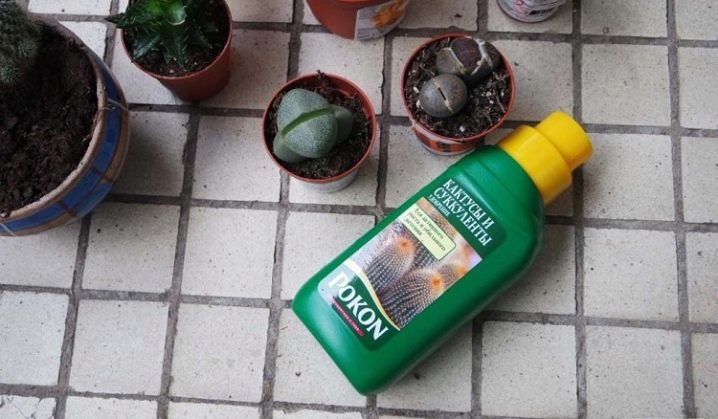
Transfer
Only young plants need to be replanted annually. But succulents over five years old can be planted in new soil only once every three or four years. It is best to carry out this procedure in the spring, when the cactus comes to life after the winter dormant period.
The substrate should be loose and not too nutritious. It can be purchased at one of the specialty stores. The same mixture can be created at home. To do this, it is necessary to combine deciduous humus, sod land, and also sand. A drainage layer should be placed at the very bottom so that there is no stagnation of water. To transplant the cactus, you need to remove it from the pot, remove the remaining dirt, and then plant the plant in a new, specially prepared soil.
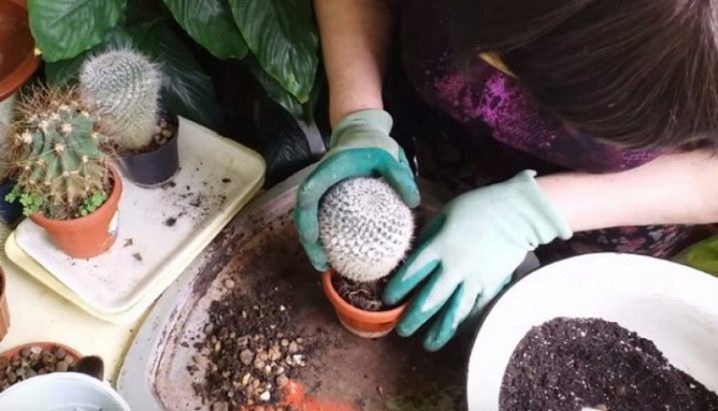
Reproduction
An important point in the cultivation of cacti is the reproduction process. In this way, you can increase the number of green "pets" on your windowsill. This can be done in different ways.
- With the help of side layers. To do this, simply separate them from the main trunk and plant them in separate containers.
- Cuttings. To propagate a cactus in this way, you can simply cut the blanks from the top of the succulent. After that, they need to be dried a little, and then planted in a peat substrate. After a certain time, the roots should appear. Then the plant can be transplanted into a separate container.
- Seeds. Such planting material can be purchased at a garden store. Seeds should be carefully placed in the prepared moist soil, and then covered with glass. After that, you need to put the container in a warm place and wait for the first shoots to appear.
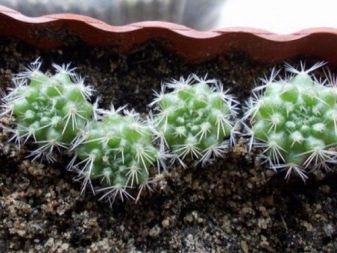
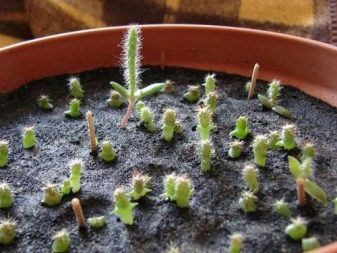
Summing up, we can say that this plant is suitable for all flower growers, without exception, since it does not require special care. However, you shouldn't completely forget about the fluffy cactus. Like any domestic crop, this succulent plant won't survive without water, sun, and nutrient-rich soil.
For information on how to care for cacti, see the video below.























































The comment was sent successfully.